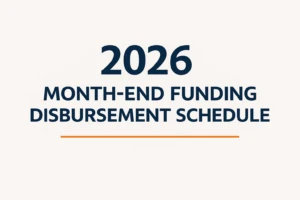In the membership world, growth isn’t just about attracting new people; it’s about keeping the ones you already have.
No matter how strong your marketing or how impressive your acquisition campaigns, if members leave as quickly as they arrive, long-term success becomes an uphill battle.
That’s where member retention comes in. It’s the art and science of ensuring your members stay connected, engaged, and loyal to your organization year after year.
In 2025, with more choices and competition than ever before, retention is no longer a “nice to have”; it’s the most reliable path to stability and sustainable growth.
This guide walks you through proven member retention strategies, from optimizing onboarding to creating loyalty programs, so you can build a thriving, committed community that keeps coming back.
Membership Retention: TL;DR
- Member retention is your ability to keep members engaged, satisfied, and renewing over time.
- Retaining members is more cost-effective than acquiring new ones and creates a stable growth foundation.
- Effective retention strategies focus on delivering consistent value and fostering community connections.
- A strong membership retention plan helps identify at-risk members early and keeps engagement high.
- In 2025, organizations that master retention will achieve higher loyalty, better revenue stability, and long-term success.
What Is Member Retention?
Member retention is the ability of your organization to keep members active, engaged, and renewing over time.
It is a measure of loyalty and satisfaction, indicating whether members find ongoing value in their relationship with your organization.
More than a percentage on a report, member retention reflects the health of your membership community.
Strong retention rates mean members feel a sense of belonging, are benefiting from your services, and are committed to your mission.
Why Is Retaining Members So Important?
Retaining members isn’t just a financial imperative—it’s a strategic one.
Acquiring a new member typically costs significantly more than retaining an existing one, making retention the more cost-effective growth lever.
Long-term members tend to engage more deeply, purchase premium services, and advocate for your brand.
They also provide stability, reducing the pressure on constant recruitment.
In short, membership retention best practices fuel both the financial sustainability and cultural vibrancy of your organization. Membership growth and retention are inextricably linked.
How to Calculate Membership Retention Rate
So, how to calculate member retention rate? This is calculated using a simple formula:
Take the number of members at the end of a set period, subtract the number of new members acquired during that period, and divide by the number of members you had at the start. Multiply by 100 to get a percentage.
For example, if you began the year with 500 members, ended with 520, and gained 80 new members, your retention rate would be:
[(520 – 80) ÷ 500] × 100 = 88%
A higher percentage indicates stronger retention, but it’s equally important to analyze trends and understand the reasons behind any changes in this metric.
What Is a Good Membership Retention Rate?
Now that you know how to figure out retention rate, you’ll be wondering what a good percentage is. While retention goals vary by industry, most healthy membership-based organizations aim for a rate between 70% and 90%.
Elite performers often exceed 90%, indicating exceptional member loyalty and satisfaction.
A rate below 70% signals potential issues—perhaps members don’t see enough value, feel disengaged, or encounter friction during renewal.
Benchmarking your rate against industry standards is helpful, but the ultimate goal is consistent improvement year over year.
How to Retain Membership in an Organization: 15 Proven Strategies
Learning how to overcome objections in sales is just one hurdle to overcome to grow your membership. Another is knowing how to retain members.
If you’re looking for some effective membership retention ideas, here are fifteen membership retention strategies you can implement to ensure your organization retains its members, new and old.
1. Optimize the Onboarding Experience
The way you welcome a new member will influence how they perceive your organization for the entire duration of their membership. One effective membership retention strategy is to ensure that onboarding is intentional and designed to create both emotional connection and practical clarity.
Beyond a simple welcome email, consider hosting a live or recorded orientation session to introduce members to the benefits, resources, and community opportunities available to them. Providing a welcome kit—either physical or digital—with curated resources helps them start benefiting immediately. Assigning a dedicated contact or “membership mentor” for their first month ensures they have someone to turn to for questions, which builds trust and confidence from day one.
2. Offer Flexible Membership Levels
Not every member’s situation will remain constant. Economic changes, shifting priorities, or lifestyle adjustments may alter what they can commit to. A sound member retention strategy involves offering different types of membership—multiple membership tiers with varying benefits and price points—creating a pathway for members to remain part of the community even when their circumstances change.
For instance, a member on the verge of cancelling due to budget constraints might instead downgrade to a lighter plan until they can resume full access. This approach preserves the relationship, maintains engagement, and increases the likelihood of upselling again in the future.
3. Host Meaningful and Engaging Events
Events are more than just networking opportunities—they are vital touchpoints that reinforce the value of membership. Hosting regular events tailored to member interests creates reasons to engage and a sense of belonging.
These can range from skill-building workshops to exclusive industry roundtables or informal social gatherings. It’s important to balance in-person and virtual formats to accommodate different preferences and schedules. Recording events for on-demand access extends their value and allows members who couldn’t attend live to still benefit from the content and insights shared.
4. Automate and Personalize Renewal Reminders
A well-timed reminder can make the difference between a member renewing or slipping away unnoticed. Automation ensures no member is forgotten, while personalization makes the message feel relevant and genuine.
Reference specific ways the member has participated—such as events attended or milestones achieved—to highlight the tangible value they’ve received. Using multiple touchpoints, including email, SMS, and in-app notifications, increases the likelihood that they’ll take action before their membership lapses. The goal is to make renewing a natural and positive step, rather than a transactional afterthought.
5. Gather and Act on Member Feedback
Members are more likely to remain loyal when they feel their voices matter. Gathering feedback regularly through surveys, polls, or informal check-ins creates a continuous loop of improvement. The key is not just to collect input but to demonstrate responsiveness—announce changes that were made as a direct result of member suggestions.
This reinforces the idea that the organization is shaped by its members, increasing their sense of ownership and commitment. Over time, this collaborative dynamic can transform members into active advocates for the organization.
6. Build a Members-Only Resource Library
Exclusive, high-value resources can serve as a cornerstone of your retention strategy. A members-only library should be thoughtfully curated with materials that directly address your audience’s goals, challenges, and interests. This could include downloadable templates, research reports, recorded training sessions, or expert interviews.
Updating the library regularly keeps members coming back to see what’s new, reinforcing the idea that their membership delivers ongoing, evolving value they can’t find elsewhere.
7. Recognize Member Milestones
Acknowledging important moments in a member’s journey creates personal connections that go beyond transactional benefits. Celebrating anniversaries, professional achievements, or personal contributions to the community signals that you see and appreciate them as individuals.
Public recognition in newsletters, social channels, or during events fosters a culture of appreciation and motivates members to continue participating actively. Even small gestures, like a handwritten note or a personalized email, can leave a lasting impression.
8. Implement a Loyalty or Rewards Program
Structured incentives encourage members to stay engaged and committed over the long term. A loyalty program might reward members for renewals, referrals, event attendance, or participation in community initiatives.
The rewards themselves can range from discounts and free upgrades to exclusive experiences or recognition perks. Gamifying the process—through points, badges, or tier levels—adds a fun and competitive element that keeps members invested in interacting with the organization.
9. Personalize All Member Communication
Relevance is key to effective communication. By segmenting your audience based on demographics, interests, or engagement patterns, you can send messages that resonate with specific groups rather than broadcasting generic updates.
For example, an invitation to an advanced workshop will have more impact when sent to members who have already attended introductory sessions. Personalization demonstrates that you understand each member’s unique needs, making them feel valued and increasing the likelihood they’ll stay engaged.
10. Foster a Vibrant Online Community
A dynamic online community allows members to interact and collaborate outside of scheduled events. Platforms like forums, private social media groups, or specialized community apps provide space for ongoing conversations, peer-to-peer support, and resource sharing.
Encouraging members to contribute their expertise, ask questions, and participate in discussions strengthens relationships and deepens their investment in the community. The more connections they form with other members, the harder it becomes to walk away.
11. Share Success Stories and Case Studies
Stories have the power to inspire, validate, and connect. By showcasing member successes—whether through written case studies, video interviews, or short testimonials—you highlight the real-world benefits of membership.
These narratives not only motivate existing members to fully utilize their benefits but also serve as proof that the organization delivers on its promises. A consistent pipeline of success stories keeps the value proposition fresh in members’ minds.
12. Provide Ongoing Education and Upskilling Opportunities
Members often join organizations with the hope of learning something new or advancing their careers. Offering educational resources that evolve with industry trends ensures that your value remains relevant year after year.
This could include certification programs, masterclasses, or exclusive access to thought leaders. The more you help members grow personally and professionally, the more they will associate their progress with their membership—and renew to keep the momentum going.
13. Conduct Insightful Exit Interviews
Departing members can offer some of the most valuable insights for improving retention. Exit interviews—whether via email, phone, or survey—can uncover patterns in why members leave and reveal opportunities to enhance the experience for others.
When handled with sincerity and openness, these conversations can also leave the door open for members to return in the future. Demonstrating that you take their feedback seriously reinforces a culture of listening and improvement.
14. Build a Culture of Inclusivity and Belonging
A truly inclusive organization attracts and retains members from diverse backgrounds by making everyone feel seen, heard, and valued. Inclusivity should be evident in leadership representation, programming, communication, and community norms.
When members feel they belong to something bigger than themselves, they are more likely to engage deeply and remain loyal over the long term. Fostering such a culture requires intentional effort, but it pays dividends in retention.
15. Create Strategic Brand Partnerships
Partnering with complementary brands allows you to extend additional benefits to your members at minimal cost. These partnerships can provide exclusive discounts, special access, or unique experiences that enhance the value of membership.
Beyond perks, strategic collaborations can create co-branded events, shared content, or new service offerings that keep your organization fresh and relevant—the more irreplaceable the benefits, the more compelling the case for renewal.
How to Build a Solid Membership Retention Plan
Now you have some member retention ideas to consider, you can follow these steps to help your organization build a solid membership retention plan.
1. Define Clear Retention Goals
A successful membership retention plan begins with clarity. Defining measurable goals gives your strategy direction and purpose. Instead of aiming vaguely to “improve retention,” set a specific target—for example, increasing your annual retention rate from 78% to 85% within the next 12 months.
Breaking that annual target into quarterly milestones helps maintain momentum and makes it easier to track progress over time. Clear goals also make it possible to evaluate the success of your initiatives and adjust your approach as needed. Without well-defined objectives, retention efforts can become reactive and scattered rather than strategic and results-driven.
2. Segment Your Member Base
Not all members interact with your organization in the same way, which is why segmentation is essential for effective retention planning. By categorizing members according to criteria such as demographics, activity levels, purchasing habits, or tenure, you can tailor communication and offerings to each group’s unique needs.
For example, newer members benefit from more onboarding support, while long-standing members value recognition or advanced learning opportunities. Segmentation allows you to allocate resources efficiently, ensuring that every member receives experiences and messages that resonate with their individual journey.
3. Identify and Monitor Key Metrics
Retention rate alone doesn’t tell the whole story—it’s a lagging indicator of member satisfaction and engagement. To spot potential retention issues early, monitor leading metrics such as event attendance, course participation, content downloads, and online community activity.
These indicators reveal how engaged your members are and can help you identify those at risk of leaving before renewal time arrives. Consistent tracking not only informs your strategy but also allows you to measure the impact of changes you implement, ensuring your retention plan evolves based on real data rather than assumptions.
4. Address Pain Points Quickly
Every membership organization will face challenges, but how quickly you address them can make or break retention. Use surveys, customer service logs, and churn analysis to pinpoint recurring issues that cause dissatisfaction or disengagement.
Whether it’s a lack of communication, limited event availability, or outdated content, swift action demonstrates responsiveness and builds trust with your members. Publicly acknowledging the feedback you’ve received and the steps you’re taking to resolve concerns can turn potential detractors into loyal advocates who feel heard and valued.
5. Map Out a Year-Round Engagement Calendar
Retention is not won at renewal time—it’s earned throughout the year. A well-structured engagement calendar ensures that members have consistent, meaningful interactions with your organization from the moment they join. This could include seasonal events, ongoing educational opportunities, exclusive content releases, and timely communications tied to member milestones.
By mapping these touchpoints in advance, you create a rhythm of engagement that keeps your organization top of mind. This proactive approach builds loyalty gradually and makes the renewal decision feel like a natural next step rather than a reconsideration of membership value.
Retain Members Effectively with Member Solutions
Member Solutions offers everything you need to execute these membership recruitment and retention strategies—automated renewal systems, event management tools, segmented communications, and detailed analytics.
With the right technology in place, such as the best membership management software, implementing a retention plan becomes seamless, giving you more time to focus on delivering value to your members.
Key Takeaways
Member retention is the foundation of sustainable growth for any membership-based organization, delivering greater stability and long-term value than acquisition alone.
By focusing on clear goals, personalized engagement, and consistent delivery of benefits, organizations can strengthen loyalty and reduce churn.
A well-planned retention strategy—supported by feedback loops, tailored communications, and meaningful member experiences—ensures members feel valued and connected.
Ultimately, those who prioritize retention will build thriving communities, stronger revenue streams, and a competitive edge in 2025 and beyond.
FAQs
What is one way to retain members?
One effective way to retain members is by consistently delivering clear, tangible value that meets their needs and keeps them engaged. This can include exclusive resources, relevant events, and personalized communication that reminds them of the benefits they gain from staying connected to your organization.
Expanding beyond the basics, retention also comes from creating a sense of belonging. When members feel seen, heard, and part of a supportive community, they’re far more likely to renew. Recognizing achievements, encouraging participation, and responding to feedback all reinforce that they matter.
What are the 3 R’s of employee retention?
The 3 R’s are Recruit, Recognize, and Retain—attract the right members, show genuine appreciation for their contributions, and create ongoing experiences that encourage loyalty. These steps build trust, strengthen relationships, and make your membership program too valuable to walk away from.
Recruiting the right people sets the stage for a strong fit between member expectations and organizational offerings. Recognition boosts morale and reinforces the value of staying involved. Retention then becomes the natural result of this alignment, creating a cycle of continuous engagement and satisfaction.
What are the four pillars of retention?
The four pillars are Engagement, Value, Communication, and Support. These work together to create a membership experience that keeps people involved, satisfied, and eager to renew year after year. Neglecting any one of these areas can weaken the overall retention strategy.
Engagement ensures members have meaningful interactions with your organization. Value comes from delivering benefits that justify membership costs. Communication keeps members informed and connected, while Support ensures they can easily access help and resources. When these pillars are strong, members feel confident in renewing their commitment.




